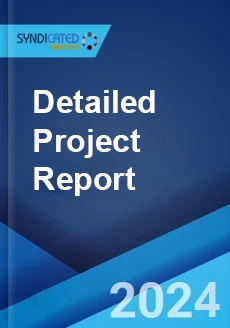
Hemostats and Tissue Sealants Market: Global Industry Analysis, Market Size, Share, Trends, Application Analysis, Growth and Forecast, 2023-2028
“Global Hemostats and Tissue Sealants Market: Global Industry Analysis, Market Size, Share, Trends, Application Analysis, Growth and Forecast, 2023-2028” provides a deep and thorough evaluation of the global Hemostats and Tissue Sealants market. Hemostats and tissue sealants are agents that prevent hemorrhage and bleeding caused by injuries and surgical procedures. It includes gelatin-based products, oxidized regenerated cellulose (ORC), fibrin glue, polysaccharide spheres, thrombin sealants, and adhesion barrier products. Hemostats and tissue sealants are widely used in various surgical and percutaneous procedures, such as laparoscopic liver surgery, colonic anastomoses, splenic trauma, cardiothoracic surgery, nephrectomy, and ureteral reconstruction. They reduce blood loss, prevent leaks, and seal suture lines. Hemostats and tissue sealants also promote faster healing, reduce the need for transfusions, and lower operating time. As a result, they are extensively used across hospitals, ambulatory surgical centers, and specialty clinics.
The rising number of surgical procedures across the globe is one of the primary factors driving the market growth. Hemostats and tissue sealants are widely used during surgical procedures to achieve hemostasis in a shorter time, inflict lesser pain on the patient, avoid tissue damage, and decrease surgical morbidity. In addition to this, the widespread product utilization in minimally invasive surgeries (MIS) to control bleeding in complex and difficult-to-access injuries and wounds is acting as another growth-inducing factor. Furthermore, the increasing prevalence of chronic diseases and related risk factors, such as cancer, cardiovascular diseases (CVDs), kidney disorders, and hemophilia is providing an impetus to the market growth. Apart from this, the rising geriatric population with high susceptibility to neurological and musculoskeletal disorders is favoring the market growth. Additionally, the introduction of absorbable hemostats that improve visualization, save operating time, and aid in preventing capillary, venous, and small arterial hemorrhage, is positively influencing the market growth. Moreover, the rising utilization of fibrin sealant products as a drug delivery system in chemotherapy, analgesia, infection, and regenerative medicine is propelling the market growth. Other factors, including significant growth in the healthcare industry, the introduction of next-generation hemostats and sealants, and increasing investments in the research and development (R&D) of new products, are anticipated to drive the market growth.
Beginning with a global overview, the report explores the dynamics that have a strong influence on the Hemostats and Tissue Sealants market and can also impact its future growth. Taking 2022 as the base year, the report covers historical market scenario from 2017-2022 and provides forecasts till 2028. This includes the study of value and volume trends and pricing history. Growth inducing factors, market restraints and recent developments have also been analysed in the report in order to provide a deeper knowledge about the industry. On a regional basis, the report examines the Hemostats and Tissue Sealants market in North America, Europe, Asia-Pacific, Latin America and Middle East & Africa. For each of these regions, the report studies the Hemostats and Tissue Sealants market in detail for latest trends, outlook and opportunities.
The report analyses the competitive structure of the Hemostats and Tissue Sealants industry and provides the profiles of major players operating in the market. The price margins for the products along with the various success and risk factors for manufacturers have also been covered in the report. Moreover, in order to determine market attractiveness, the report analyses the Hemostats and Tissue Sealants industry along the parameters of the Porter’s Five Forces model. This model examines the degree of competition in the Hemostats and Tissue Sealants industry by analysing the threat posed by new entrants and substitutes, and the bargaining power of suppliers and buyers. SWOT analysis of the market has also been presented in the report which highlights the strengths, weaknesses, opportunities and threats pertaining to the Hemostats and Tissue Sealants industry. Furthermore, the value chain analysis of the Hemostats and Tissue Sealants industry has also been covered in the report. This comprises of all the activities in the value chain, such as the procurement of various raw materials, manufacturing, sales and distribution.
Key Segments and Highlights of the Global Hemostats and Tissue Sealants Market
- Historical and current scenario
- Trends and developments
- Market forecast
- Price analysis and forecast
- Porter’s five forces analysis
- SWOT analysis
- Value chain analysis
- Market Breakup by Type
- Market Breakup by End-Use
- Market Breakup by Region
- North America
- Europe
- Asia-Pacific
- Latin America
- Middle East & Africa
- Key players
The report is a result of exhaustive primary and secondary research undertaken by analysts having years of experience in the Hemostats and Tissue Sealants industry. All the qualitative and quantitative aspects of the industry have been covered and the collected data has been analysed and presented in the form of easily comprehensible charts, graphs and tables.
Purchase Options
Ask For Customization
Personalize this research
Triangulate with your own data
Get data as per your format and definition
Gain a deeper dive on a specific application, geography, customer or competitor
Any level of personalization
Get in Touch
Call us on
US: +1-213-316-7435
Uk: +44-20-8040-3201
Drop us an email at
sales@syndicatedanalytics.com